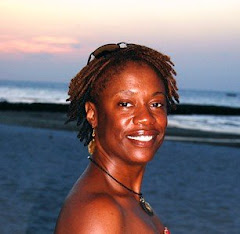

I’m thinking a lot about the definition of the word “impact” these days. When I reflect on my past two years in Kenya, the meaning might seem clear at first.
“Just what the heck is different about Kenyan media since my plane touched down in late June 2008? Wow, that question almost felt egomaniacal as I typed it! How can one person expect to exert enough influence to quantify a tangible impact on an entire country’s media? In one year, or two….or 10, for that matter?
Well, my ICFJ colleagues, and media consultants around the globe, have found ways to leave a mark, in even less time than my tenure. Right next door in Uganda, my colleague Chris Conte’s mentoring of several journalists resulted in major government policy changes and funding pledges. I even scored a similar “victory” just months into my tenure in Nairobi, when a Sept. 2008 Daily Nation feature about the poor state of Kenyan public health facilities resulted in a promise to spend more than $7 million to repair and refurbish them.
So that’s one definition of impact: grooming and training reporters who can produce journalism that pushes officials to make positive decisions on behalf of the public.
But what are some of the other symbols of impact in this setting? After all, as exciting as those kinds of high-profile stories and responses are, they can be frustratingly rare. (Two years later, I’m still trying to organize the follow-up to that September 2008 package; more on that in a future posting.) A dizzying blend of culture, customs, a punitive media atmosphere, lack of societal and legal imperatives, and of course, low skill levels, may make producing consistent high-octane journalism impossible in the short term. That’s why on the most unlikely of days, September 11th, I received a cosmic sign that “impact” is a hydra-headed creature that must be constantly nourished to reach the larger goal.
Two Saturdays ago, a two-page spread of health stories in the Daily Nation gave me a powerful reminder of how far I’ve come in this Kenyan training journey. Page 10 carried a story about the increasing incidence of strokes in Kenya, produced by one of the best writers I’ve encountered since arriving in Kenya, Paul Muchiri Karanja. He’s the quintessential “shoe leather” reporter; knows which questions to ask and how to ask them, and has a strong feature writing instinct.
Page 11 of that same paper featured the print version of the convergence experiment I proposed, trying to get both NTV and Daily Nation to produce separate stories about the same topic. Kisumu Bureau reporter Stella Cherono is a relatively new journalist with a strong interest in health issues. But her writing and story development skills are still raw. In the first draft of her story about a new government policy to treat diarrheal disease in children, I found a hidden gem down at the very end. One of the mothers Stella interviewed at Webuye Hospital said some people believe children with diarrhea are “bewitched” with something called “Bhikumba”…a mix of bones and sand in the stomach, and that only a witchdoctor’s intervention can help.
In my edit with Stella, I helped her understand that this kind of detail can instantly draw readers into a story. They can’t help but want to learn more about a topic with an intriguing intro like that. The resulting story helped explain how children can benefit when the government relies on proven research to support a cost-effective, positive health policy.
Full-disclosure: the convergence project didn’t unfold as originally planned. Instead of the NTV story airing on a Friday night, with a suggestion that viewers read more about the topic in Saturday’s paper, the TV story got delayed by a day. Daily Nation could have included a teaser to watch the NTV story that evening had we anticipated that shift, but at least both stories ran.
Anyway, on this side of the dizzying amount of planning and pleading it took to get both stories produced, there’s time to reflect on impact in a more organic sense. It takes time for any “outsider” to earn the trust and respect of coworkers and managers, especially in a large, multilayered organization like Nation Media Group. Throw in cultural challenges and gender attitudes, and there are moments when I’m not even sure how I got editors to let me call these kinds of shots! But my helping produce two prominently-placed, full page health features means somebody up there likes me…they really LIKE me!
Ultimately, a story from last month has registered the biggest “impact punch” of all. It doesn’t even matter that it ran on Page 36. What does matter is that it ran at all, because before I came to Nation Centre, it would have been flatly rejected. It’s a simple, non-breaking news story urging Kenyans to ride their bikes to work. One of the most energetic young journalists I’ve mentored since my arrival, Joy Wanja, pitched the story after a conversation with a doctor she interviewed on another topic. She was able to convince editors that conversation was worth publishing, and it was given a full page.
Maybe that’s because the main topic, the need to exercise more to prevent heart disease, obesity and high blood pressure, probably resonated with an editor--most likely some guy around my age! But it’s also because after my two years at Nation Centre, that same editor was far more willing to carve out precious news space for health-related topics.
Now THAT’S impact, any way you slice it.





No comments:
Post a Comment